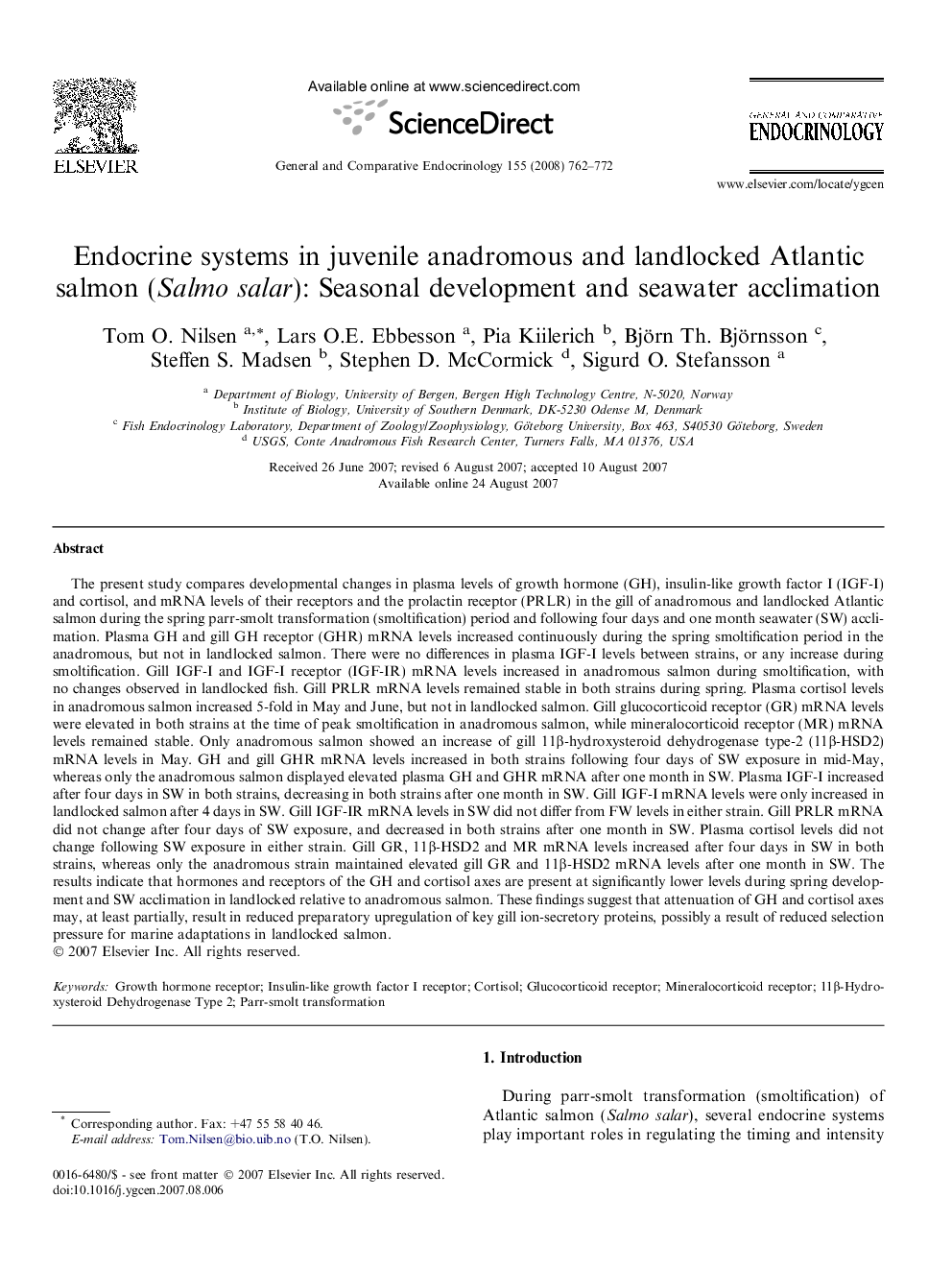| کد مقاله | کد نشریه | سال انتشار | مقاله انگلیسی | نسخه تمام متن |
|---|---|---|---|---|
| 2802061 | 1156185 | 2008 | 11 صفحه PDF | دانلود رایگان |

The present study compares developmental changes in plasma levels of growth hormone (GH), insulin-like growth factor I (IGF-I) and cortisol, and mRNA levels of their receptors and the prolactin receptor (PRLR) in the gill of anadromous and landlocked Atlantic salmon during the spring parr-smolt transformation (smoltification) period and following four days and one month seawater (SW) acclimation. Plasma GH and gill GH receptor (GHR) mRNA levels increased continuously during the spring smoltification period in the anadromous, but not in landlocked salmon. There were no differences in plasma IGF-I levels between strains, or any increase during smoltification. Gill IGF-I and IGF-I receptor (IGF-IR) mRNA levels increased in anadromous salmon during smoltification, with no changes observed in landlocked fish. Gill PRLR mRNA levels remained stable in both strains during spring. Plasma cortisol levels in anadromous salmon increased 5-fold in May and June, but not in landlocked salmon. Gill glucocorticoid receptor (GR) mRNA levels were elevated in both strains at the time of peak smoltification in anadromous salmon, while mineralocorticoid receptor (MR) mRNA levels remained stable. Only anadromous salmon showed an increase of gill 11β-hydroxysteroid dehydrogenase type-2 (11β-HSD2) mRNA levels in May. GH and gill GHR mRNA levels increased in both strains following four days of SW exposure in mid-May, whereas only the anadromous salmon displayed elevated plasma GH and GHR mRNA after one month in SW. Plasma IGF-I increased after four days in SW in both strains, decreasing in both strains after one month in SW. Gill IGF-I mRNA levels were only increased in landlocked salmon after 4 days in SW. Gill IGF-IR mRNA levels in SW did not differ from FW levels in either strain. Gill PRLR mRNA did not change after four days of SW exposure, and decreased in both strains after one month in SW. Plasma cortisol levels did not change following SW exposure in either strain. Gill GR, 11β-HSD2 and MR mRNA levels increased after four days in SW in both strains, whereas only the anadromous strain maintained elevated gill GR and 11β-HSD2 mRNA levels after one month in SW. The results indicate that hormones and receptors of the GH and cortisol axes are present at significantly lower levels during spring development and SW acclimation in landlocked relative to anadromous salmon. These findings suggest that attenuation of GH and cortisol axes may, at least partially, result in reduced preparatory upregulation of key gill ion-secretory proteins, possibly a result of reduced selection pressure for marine adaptations in landlocked salmon.
Journal: General and Comparative Endocrinology - Volume 155, Issue 3, 1 February 2008, Pages 762–772